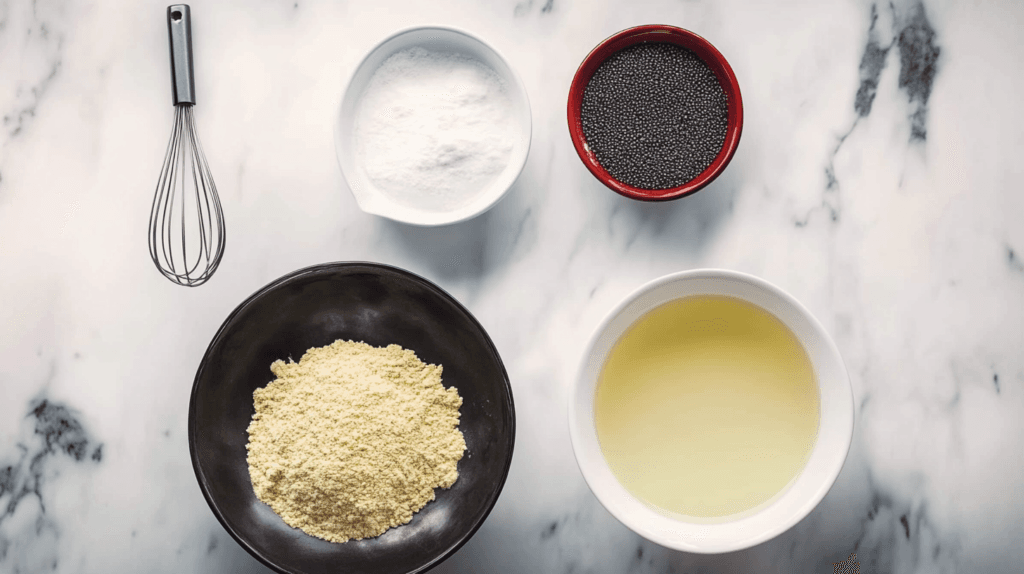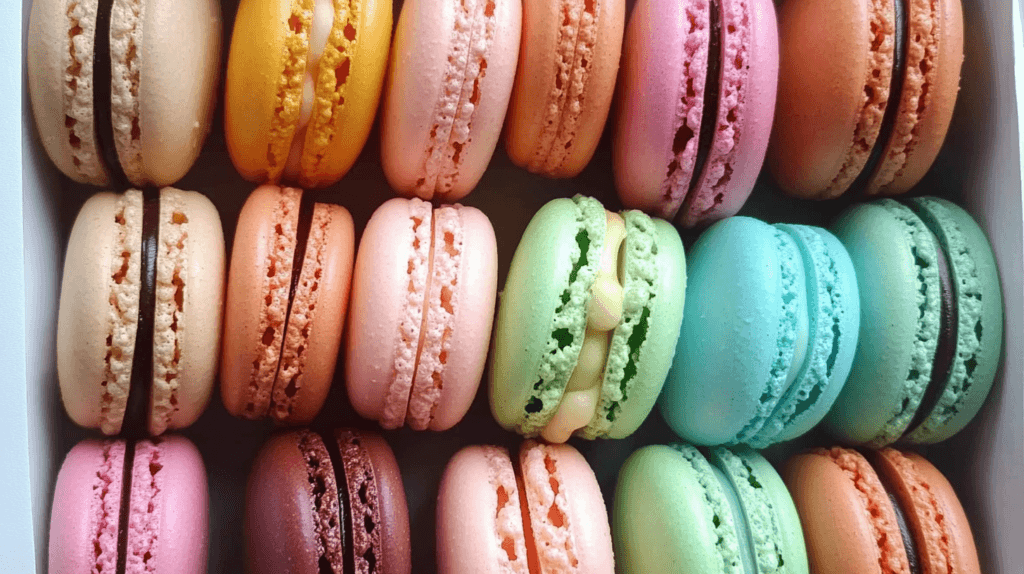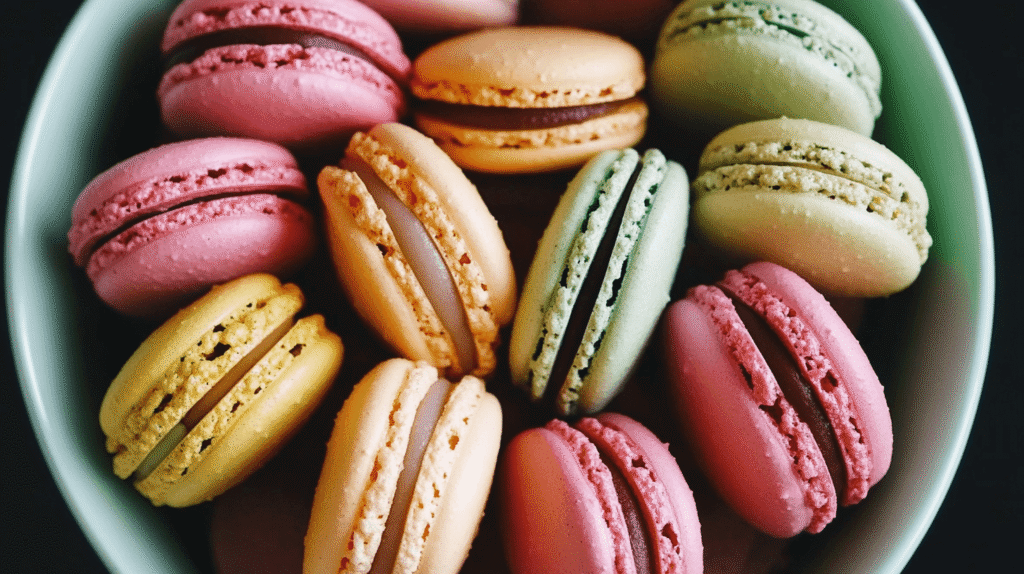If you’re following a gluten-free diet, you might be wondering: Are macarons gluten-free? These delicate, colorful French cookies have gained worldwide popularity, but are they safe for people with gluten intolerance or celiac disease? The answer is mostly yes with a few important considerations.
In this article, we’ll dive into why macarons are naturally gluten-free, the risks of cross-contamination, and how to make sure you’re enjoying safe, delicious treats. Plus, we’ll share a gluten-free macaron recipe you can try at home!
Table of Contents
Understanding Macarons
What Are Macarons?
Macarons are French sandwich cookies made with almond flour, egg whites, and sugar. They feature a crisp outer shell with a chewy, slightly soft interior, often filled with ganache, buttercream, or jam.
Originating in France, macarons have captured global hearts with their vibrant colors and luxurious texture. Unlike traditional cookies made with wheat flour, macarons use naturally gluten-free almond flour.
Macarons vs. Macaroons: What’s the Difference?
It’s easy to mix them up, but macarons and macaroons are very different desserts:
| Feature | Macaron | Macaroon |
|---|---|---|
| Main Ingredient | Almond flour | Shredded coconut |
| Texture | Light, crisp, chewy inside | Dense, moist, chewy |
| Shape | Smooth, round sandwich cookie | Small, rough coconut mound |
| Origin | France | Italy |
Both are often gluten-free, but macarons stand out with their delicate structure and flavor variety.
Ingredients in Traditional Macarons

Almond Flour: The Key Component
The main ingredient in macarons, almond flour, is naturally gluten-free. It gives macarons their unique lightness and nutty flavor.
Egg Whites and Sugar
Egg whites, granulated sugar, and powdered sugar the other shell ingredients are also gluten-free. These create the light, airy texture macarons are famous for.
Fillings: A Potential Risk
While the shells are usually safe, some fillings can introduce gluten. Watch out for:
- Flavored buttercreams (may use wheat-based thickeners)
- Cookie or cake-flavored fillings (often contain gluten)
- Some caramel or chocolate sauces (may include gluten-based additives)
Are Macarons Gluten-Free?
How Macarons Avoid Gluten
In their purest form, macarons are naturally gluten-free. They rely on almond flour, egg whites, and sugar none of which contain gluten. This makes them a safe and delicious treat for many people avoiding gluten.
Common Gluten Contamination Risks
Despite the naturally gluten-free ingredients, cross-contamination can happen, especially in shared bakery environments:
- Shared Equipment: Mixers, piping bags, or baking trays might be used for gluten-containing products too.
- Fillings: Some use gluten-based ingredients.
- Flour Dust: Airborne wheat flour in bakeries could contaminate gluten-free items.
Tip: If you have celiac disease or severe gluten sensitivity, look for macarons made in a certified gluten-free facility.
Gluten-Free Macarons: What to Check
Cross-Contamination in Bakeries
When buying from a bakery, ask: ✅ Do you use separate equipment for gluten-free items?
✅ Are the fillings gluten-free?
✅ How do you prevent cross-contact?
Always double-check, especially if your health depends on strict gluten avoidance.
Reading Labels for Packaged Macarons
When shopping for prepackaged macarons:
- Look for Certified Gluten-Free labels.
- Check for hidden gluten sources like modified food starch or malt extract.
- Review manufacturing notes about shared facilities.
Best Gluten-Free Macaron Brands
Several brands offer gluten-free options, including:
- Ladurée – Iconic French macarons (verify for cross-contamination if sensitive)
- Dana’s Bakery – Specializes in gluten-free flavors
- Chantal Guillon – Premium macarons with gluten-free choices
- Pierre Hermé – High-end, mostly gluten-free offerings
Find them at specialty bakeries, online stores, or well-stocked supermarkets.
How to Make Gluten-Free Macarons at Home

Making your own macarons ensures complete control over ingredients!
Step-by-Step Gluten-Free Macaron Recipe
Ingredients:
- 1 cup almond flour
- 1 ¾ cups powdered sugar
- 3 large egg whites (room temperature)
- ¼ cup granulated sugar
- ½ teaspoon vanilla extract
- Food coloring (optional)
- Gluten-free filling (ganache, buttercream, or jam)
Instructions:
- Sift almond flour and powdered sugar together.
- Whip egg whites until foamy, then gradually beat in granulated sugar until stiff peaks form.
- Fold dry ingredients into egg whites carefully.
- Pipe onto a parchment-lined baking sheet.
- Rest for 30–45 minutes to form a skin.
- Bake at 300°F (150°C) for 12–15 minutes.
- Cool and fill with your choice of gluten-free fillings.
Pro Tips:
- Use separate, clean equipment.
- Buy certified gluten-free almond flour.
- Double-check all fillings and colorings.
Gluten-Free Macaron Fillings: What to Choose and Avoid
Safe Gluten-Free Fillings
✅ Chocolate ganache
✅ Fruit jams and preserves
✅ Nut-based spreads (like almond or hazelnut butter)
✅ Traditional buttercream (made without thickeners)
✅ Marshmallow fluff
Fillings to Avoid
🚫 Cookie dough or brownie fillings
🚫 Oreo or cookies-and-cream flavors (unless using gluten-free cookies)
🚫 Tiramisu and red velvet flavors (often contain gluten)
🚫 Some caramel sauces (check for malt or wheat starch)
FAQs About Macarons and Gluten
Are all macarons gluten-free?
Most are, but fillings or bakery cross-contamination can add gluten. Always check labels or ask.
Can celiacs eat macarons?
Yes, if the macarons are made in a gluten-free environment.
Do Ladurée macarons contain gluten?
The shells are gluten-free, but they aren’t officially certified. Ask before buying if you’re sensitive.
What flavors may contain gluten?
Cookies-and-cream, tiramisu, red velvet, and other cake-flavored options may introduce gluten.
Can I make gluten-free macarons at home?
Absolutely just use almond flour, gluten-free fillings, and dedicated gluten-free equipment.
What’s the difference between regular and gluten-free macarons?
Usually, there’s no difference! But regular bakery macarons might face contamination risks.
Conclusion
So, are macarons gluten-free?
In most cases, yes! Traditional macarons use almond flour, not wheat flour, making them naturally gluten-free. However, cross-contamination and certain fillings can introduce gluten, so it’s important to verify ingredients especially for those with celiac disease.
Looking for more gluten-free inspiration? Explore Gluten-Free Dinner Recipes to complement your dessert menu! 🍽️
Printable Recipe Card
Want just the essential recipe details without scrolling through the article? Get our printable recipe card with just the ingredients and instructions.

